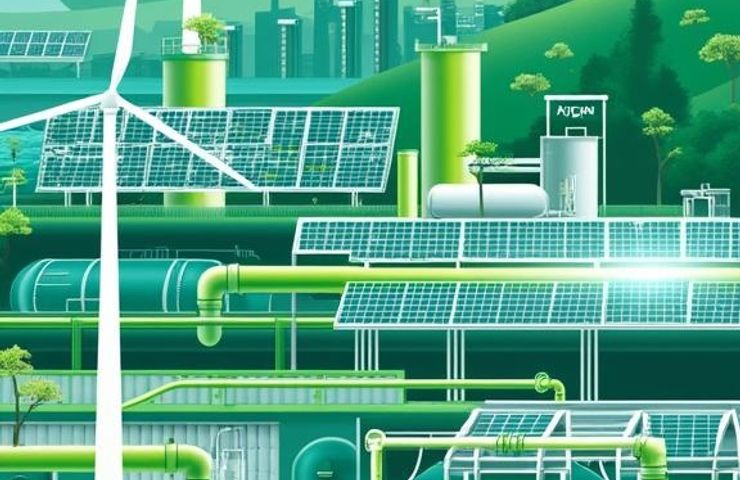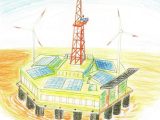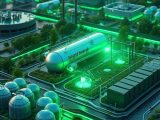
Hydrogen Production to Soar Under China’s 2025 Green Hydrogen Policy
October 30, 2025New Era for China’s Hydrogen Policy
Back in mid-October 2025, China’s NDRC and NEA rolled out what policy guru Jian Wu dubs “the most important low-carbon policy of the year.” For the first time at the national level, industries tied to green hydrogen can snag direct grants to turbocharge hydrogen production and boost adoption in heavy hitters like aviation, shipping, and chemical refining. It’s a significant pivot—moving away from low-interest loans and power price cuts toward straight-up subsidies.
Driving Industrial Decarbonization
China’s push for industrial decarbonization has been gaining momentum ever since the 14th Five-Year Plan and the 2021–2035 National Hydrogen Industry roadmap. Once coal-obsessed, the nation is weaving renewables—and electrolysis-based green hydrogen production—into its clean-energy playbook. The latest policy nudges airlines, refineries, shipping fleets, and heavy manufacturers to embrace zero-emission tech by picking up a chunk of their capital and operating costs.
Policy Mechanics and Grants
- Direct Grants: Cover up to 20–30% of your upfront expenses.
- Industrial Eligibility: Airlines, shipping lines, refineries, big manufacturers—all qualify.
- Output Targets: 100,000–200,000 tonnes of green hydrogen annually by end-2025.
- Vehicle Deployment: 50,000 hydrogen fuel cell vehicles on the roads.
- R&D Funding: Cash injections for next-gen electrolyzers and fuel cells.
- Infrastructure Build-Out: Fast-tracked approvals for storage, pipelines, and refueling stations.
Instead of waiting on local governments or SOEs, Beijing is underwriting national-scale projects to bolster its hydrogen infrastructure—from storage tanks and pipelines to station rollouts and port bunkering.
Scaling Green Hydrogen Production
The policy’s centerpiece is green hydrogen made via electrolysis, using renewable power to split water into H₂ and oxygen. Solar- and wind-rich regions like Inner Mongolia and coastal Guangdong are now front-runners for gigawatt-scale electrolyzer installations tied into existing renewables.
Synergies and Technology Chain
The October 2025 plan also pushes cross-sector teamwork. Green ammonia and methanol production get the green light—using hydrogen feedstock for fertilizer, bunker fuels, and industrial chemicals. Pair that with hydrogen fuel cells, and you’ve got export-ready, low-emission industrial clusters taking shape.
Local Pilots to National Scale
Before the national policy, provinces like Guangdong and Hebei were piloting zones, and cities such as Beijing, Wuhan, and Datong tested hydrogen buses and trucks to fine-tune refueling and logistics. Now, federal grants are set to supercharge these pilots into full-blown commercial rollouts.
Global Ripples and Strategic Stakes
With the United States dialing back similar subsidies, China’s aggressive stance aims to capture a bigger slice of the green hydrogen export market. Analysts at S&P Global Commodity Insights warn these subsidies could push global hydrogen prices down, squeezing out less-subsidized US and EU producers. But it’s not without controversy: environmentalists fret that coal-based hydrogen won’t exit fast enough, and some trading partners might challenge state-backed overcapacity under WTO rules.
Policy in Broader Context
Over the past five years, China has tagged hydrogen as one of six “industries of the future.” Early efforts focused on local pilots and SOE projects without hefty subsidies. The June 2025 pilot program from the NDRC and NEA laid the groundwork—but October’s policy pulls out the real financial firepower, lining up with China’s 2060 carbon-neutrality pledge.
Risks and Challenges
Even with bold promises, hurdles remain. Building out nationwide hydrogen infrastructure—from cryogenic storage to high-pressure pipelines and pump stations—demands mastery of complex tech. Financing gigawatt-scale electrolyzers still carries commercial risk if global hydrogen prices tumble. And pivoting feedstocks away from coal will require tougher regulations and tech upgrades.
What’s Next?
Watch for:
- First-round grant announcements: Which regions and firms get funded?
- Infrastructure approvals: Will pipeline permits and storage hubs clear local scrutiny?
- Feedstock transitions: How fast will renewables overtake coal in hydrogen production?
- Market reactions: Will Western policymakers fire up fresh subsidies?
Bottom line: China’s October 2025 policy makes it crystal clear—green hydrogen is no side project. With serious federal backing, the country’s set to ramp up hydrogen production, slash clean-hydrogen costs, and cement its leadership in the global energy transition.



 With over 15 years of reporting hydrogen news, we are your premier source for the latest updates and insights in hydrogen and renewable energy.
With over 15 years of reporting hydrogen news, we are your premier source for the latest updates and insights in hydrogen and renewable energy.